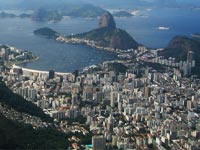
Rio de Janeiro
City Population (2013) 11,616,000
Host Stadium Estádio do Maracanã
Host Stadium Capacity 76,935
Rio de Janiero is the second-largest city in Brazil, and the third biggest metropolitan area in all of South America. The metro area of Rio has a population of almost 12 million, and it's one of the most visited place on earth. The natural settings, Carnival celebrations and balneario beaches all make it a popular destination. Check out places like the Sugar Loaf Mountain, the statue of Christ the Redeemer, and the Prainha Beach. The venue will be the famous Maracana, which hosted the 1950 World Cup final between Uruguay and Brazil.
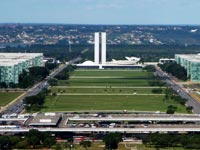
Brasília
City Population (2013) 4,041,042
Host Stadium Estádio Nacional Mané Garrincha
Host Stadium Capacity 70,042
Brasilia is the capital of Brazil, as is its fourth-most populated city. The nation al government is located here, as well as popular architectural sites like the Palace of Justice, The Three Powers Square and the Barasilia Cathedral. Brasilia isn't much of a walking city since it's a big metropolis with large highways, but there is a lot to do if you take the city in sections – but there is also a metro to help folks get around. The venue will be the 68,000+ capacity Estadio National, which will be the largest of all 2014 World Cup stadiums.
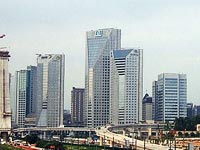
São Paulo
City Population (2013) 20,820,093
Host Stadium Arena Corinthians
Host Stadium Capacity 68,000
Sao Paulo is the biggest and most populous city in Brazil, as well as the seventh-largest city in the world. It is also colloquially known as "Sampa" or "Cidade de Garoa" – city of drizzle. It is known for unreliable weather, architecture, skyscrapers and gastronomy. There are many concert halls and opera houses, including the Sao Paulo Theater and Theatro Sao Pedro and Alfa Theater. The cuisine in Sao Paulo is wide ranging, with the food of over 60 countries in over 12,000 restaurants. The venue will be the new Arena de Sao Paulo, which will become the home of Corinthians after the World Cup.
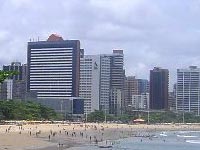
Fortaleza
City Population (2013) 3,602,319
Host Stadium Estádio Castelão
Host Stadium Capacity 64,846
Fortaleza is one of Brazil's biggest cities, situated on the northeast coast of the country. It is a party city, but the Carnival is not on the same level as other large cities in Brazil. Fortaleza is known for its comedy scene, forro music, and its dance clubs. When going to Fortaleza, you likely won't go very far from the beach area, but there are attractions all around. Check out the free History Train tour that happens on alternating Saturdays, the Praca do Ferreira and the Theatreo Jose de Alencar. The venue will be the Estadio Castelao, which is being renovated for the World Cup. It is home to Ceara and Fortalezo football clubs.
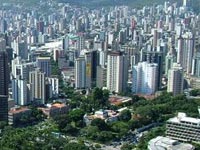
Belo Horizonte
City Population (2013) 5,182,977
Host Stadium Estádio Mineirão
Host Stadium Capacity 62,547
Belo Horizante is the capital of the state of Minas Gerais, and has a population of almost 2.5 million people (5 million in the metropolitan area). It is the 6th biggest city in Brazil, and the most populous city in Minas Gerais. It is best traveled by foot or by taxi, as the train really just goes through one area of the city. The Savassi neighborhood is always a nice stroll, as well as Lourdes. Check out the Mercado Central to do a little shopping, or the weekend street fair at the Palacio das Artes. The Inhotim Art Museum is also really nice, if you're willing to venture a little out of the central area of the city.
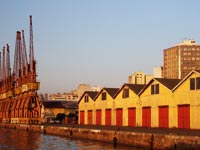
Porto Alegre
City Population (2013) 4,405,769
Host Stadium Estádio Beira-Rio
Host Stadium Capacity 51,300
Porto Alegre is the capital and largest city of Rio Grande do Sul in the very south of Brazil. Its population is just over 1.5 million (4.4 million metro area), and it is one of the most important political and cultural centers of the country. The city is on the banks of Lago do Patos, and has the city has a lot of neoclassical architecture. There is a big arts and music scene, but Porto Alegre also has high crime rates, especially in the downtown area.
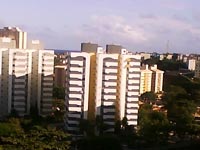
Salvador
City Population (2013) 3,574,804
Host Stadium Arena Fonte Nova
Host Stadium Capacity 56,000
Salvador is the scene that many people think of when they think about Brazil. It's the largest city on the northeast coast, as it known as Brazil's capital of happiness. It is known for being relaxed, easygoing, and fun-loving. The outdoor parties take place throughout the year, and it is home to the largest carnival in the world. The city itself has over 2.6 million residents, which ranks it as the third most populous city in Brazil behind Sao Paulo and Rio de Janiero.
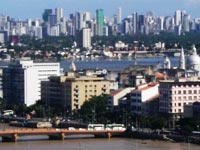
Recife
City Population (2013) 3,743,854
Host Stadium Arena Pernambuco
Host Stadium Capacity 46,154
Recife is the fifth-largest city in Brazil, and is the capital of the state of Pernambuco. It is in Northeast Brazil on the coast of the Atlantic Ocean. The beach Porto de Galinhas is just south of the city, and receives praise as the best beach in Brazil. Recife is sometimes called the Veneza Brasileira (Brazilian Venice) for its intricate waterways. The city's Carnival celebration is very popular, attracting over 1.6 million people to celebrate on the streets every year. The venue will be the brand new Arena Pernamcuo, with a capacity of 42,849.
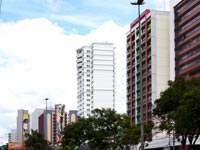
Cuiabá
City Population (2013) 551,098
Host Stadium Arena Pantanal
Host Stadium Capacity 42,968
Cuiaba is the capital of the state of Mato Grosso, and is located in the exact center of South America. It is much smaller than most of the other host cities for the 2014 World Cup, with only 550,000 residents in the city. The city doesn't have the luxury accommodations or the big tourist stops that you see in Sao Paulo or Rio de Janiero, but if you canoe the small rivers of North Pantanal you can see animals like monkeys and river otters.
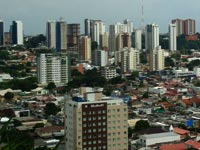
Manaus
City Population (2013) 2,316,173
Host Stadium Arena da Amazônia
Host Stadium Capacity 42,374
Manaus is large city in the otherwise sparsely populated Amazon rainforest, with a population of 2 million. It is the only city in the Amazon or Northern Brazil to host any 2014 World Cup matches. The city can get quite hot in the summers, but many people come to Manaus to start tours of the river. The Mercado Adolpho Lisboa is the city's oldest marketplace, and is a copy of the Les Halles in Paris. You can also check out the Rio Negro Cultural Center and the Amazonas Opera House, which are right next to each other.
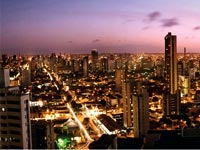
Natal
City Population (2013) 1,363,547
Host Stadium Arena das Dunas
Host Stadium Capacity 42,086
Natal is the capital and largest city of the Rio Grande do Norte. The city has a population of almost 1 million, with the metro area having about 1.5 million. Natal is a beautiful city on the northeast coast, and is nicknamed "Cidade do Sol" – the city of the sun. The sea off the coast is one of the most pristine and clear you will get in Brazil, and the Parrachos de Maracajau is a great place to go snorkeling or diving near coral reefs.
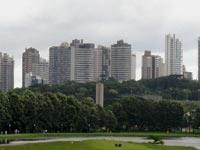
Curitiba
City Population (2013) 3,209,980
Host Stadium Arena da Baixada
Host Stadium Capacity 43,981
Curitiba is the capital of the state of Parana, and has a population of over 1.7 million. It is on the southern coast of Brazil, and this will be the second time it hosts matches in a World Cup. This is a big arts and crafts fair in the old city every Sunday that is worth a look, as well as a very impressive botanical garden that is world famous. A fun place to check out is the 24 Horas Street, a street that never sleeps. There are over 30 shops there that never close – from banks to bars to restaurants. The Historic Area has the oldest buildings in the city, including those with German influence that is seen throughout the city.
